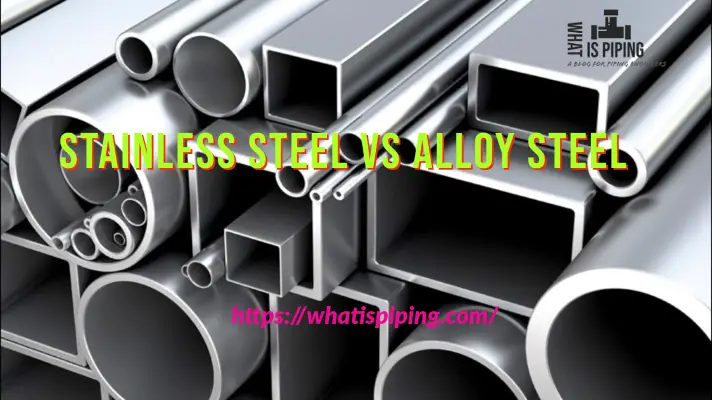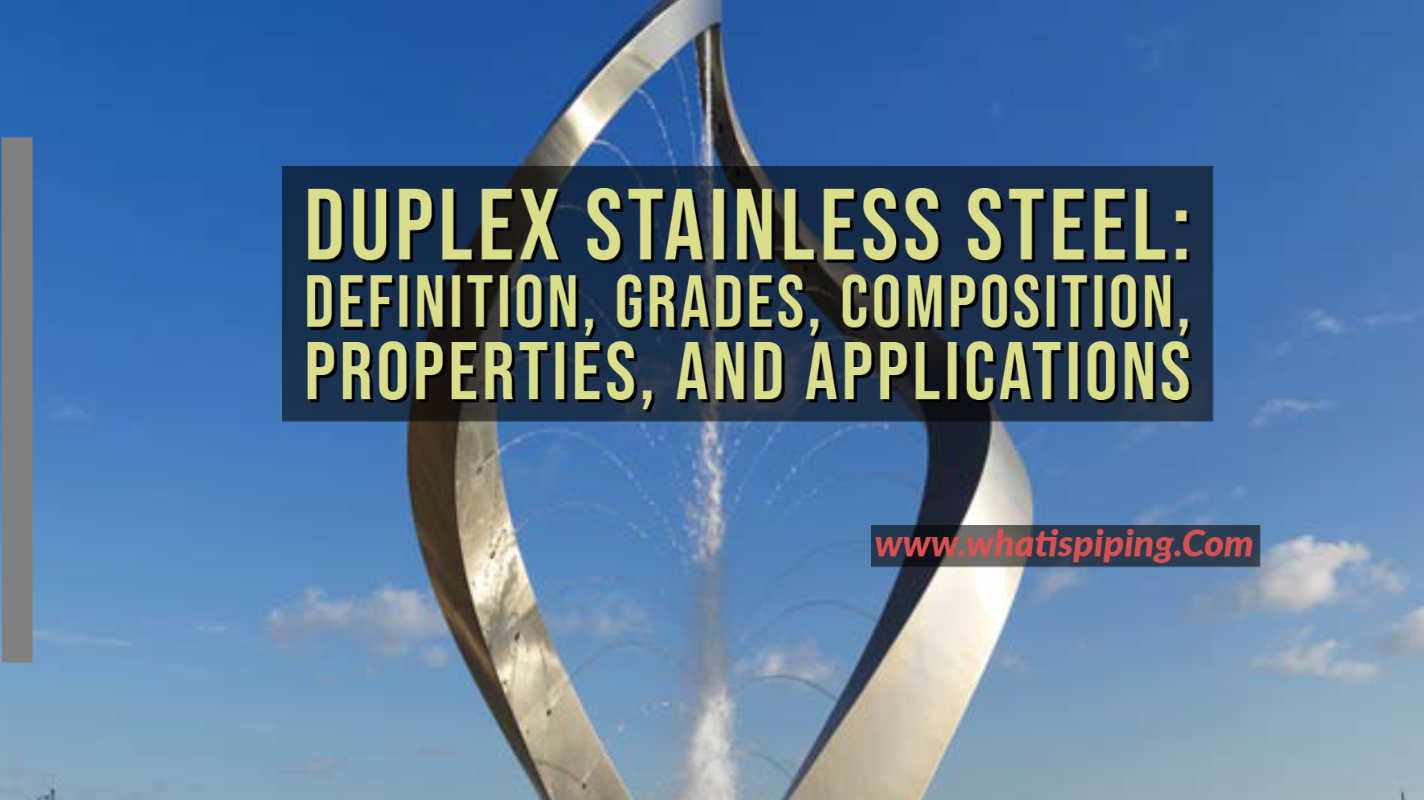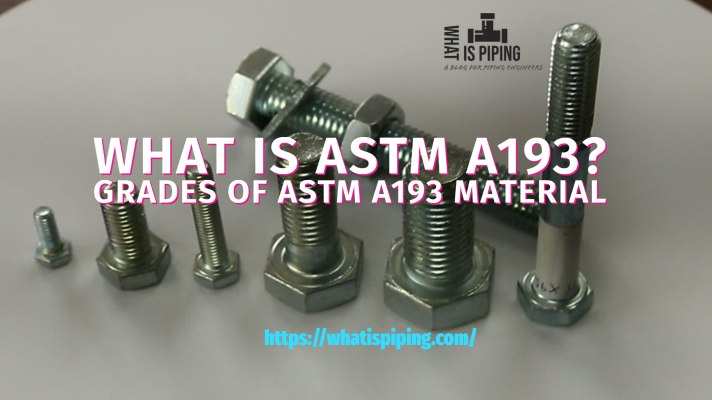Titanium alloys are highly popular in industries because of their very high tensile strength and toughness along with their very lightweight and extraordinary corrosion resistance properties. Titanium alloys are produced by combining pure titanium with other metals or chemical components. The presence of these different metals and chemical components modifies the physical properties of titanium alloy. Titanium is relatively powerful on its own — about as strong as steel — but when combined with other metals and chemical components, it becomes considerably stronger. On the other hand, titanium alloy has other advantages besides enhanced strength.
What is Titanium Alloy?
Titanium alloy is a metal or chemical alloy predominantly made of pure titanium with other metals or chemical elements dispersed. It’s made by combining titanium with other metals and chemical ingredients precisely. The mixture is allowed to cool once the correct ratio has been attained. In general, Titanium alloy contains traces of aluminum, niobium, tantalum, molybdenum, vanadium, zirconium, manganese, iron, nickel, chromium, cobalt, and copper.
Application of Titanium Alloys
Titanium alloys find wide applications in
- Chemical processing
- Chlorate manufacturing
- Desalination
- Marine applications
- Production Equipment Components.
- Aircraft turbines
- Engine components
- Aircraft structural components
- Aerospace fasteners
- High-performance automatic parts
- Marine applications
- Sports equipment
- Orthopedic pins and screws
- Orthopedic cables
- Ligature clips
- Surgical staples
- Springs
- Orthodontic appliances
- In joint replacements
- Cryogenic vessels
- Bone fixation devices
- Hydrometallurgical applications
- Elevated temperature chemical manufacturing
- Cryogenic Applications
Types of Titanium Alloy
Depending on the metallurgical structure, Titanium alloys can be classified into three broad categories as listed below:
i) Alpha Alloys:
It is alloyed with small amounts of oxygen to enhance commercially pure titanium’s hardness and tensile strength. It is feasible to manufacture a range of economically pure titanium grades with strength values ranging from 290 to 740 MPa by adjusting the amounts added.
Although minor amounts of beta phase are possible if the impurity levels of beta stabilizers such as iron are significant, these materials are nominally completely alpha in structure. While the alpha alloys cannot be heat-treated to increase strength, adding 2.5 percent copper to titanium produces a material that responds to solution treatment and aging the same way that aluminum-copper alloys do. Aluminum is an alpha stabilizer found in several commercially available alloys as an alloying additive to titanium.
ii) Alpha-Beta Alloys:
The beta phase is stabilized by vanadium, molybdenum, iron, and chromium, and various alpha-beta alloys have been created. These are typically medium to high-strength materials, with tensile strengths ranging from 620 to 1250 MPa and creep resistance ranging from 350 to 400°C. Low and high cycle fatigue and fracture toughness are increasingly important to design characteristics. Thus, thermomechanical and heat treatment processes have been developed to ensure that the alloys provide the best mechanical properties for various applications. Near alpha, alloys are employed for maximal creep resistance at temperatures above 450°C. At temperatures up to 600°C, they have sufficient creep strength.
iii) Beta Alloys:
Beta alloys are the other type of titanium substance. All-beta alloys can be made when enough beta-stabilizing elements are added to titanium. These materials have been around for a long time but have only recently gained popularity. They’re easier to hard work than alpha-beta alloys, can be heat treated to high strengths, and some have better corrosion resistance than commercially pure grades. There are international and national specifications for titanium materials used in aerospace, but none exist for materials used in non-aerospace applications. The ASTM collection of specifications is commonly utilized in this industry.
Examples of Titanium Alloys
The following table (Courtesy: azom.com) provides a list of titanium alloys along with their examples.
| Types of Titanium Alloy | Examples of Titanium Alloy |
| Alpha Titanium Alloy | Ti/Pd Alloys – ASTM grades 7 and 11 |
| Alpha + Compound | Ti-2.5%Cu – IMI 230 |
| Near Alpha Titanium Alloys | Ti-8%Al-1%Mo-1%V Ti-6%Al-5%Zr-0.5%Mo-0.2%Si – IMI 685 Ti-6%Al—2%Sn-4%Zr-2%Mo-0.08%Si Ti-5.5%Al-3.5%Sn-3%Zr-1%Nb-0.3%Mo-0.3%Si – IMI 829 Ti-5.8%Al-4%Sn-3.5%Zr-0.7%Nb-0.5%Mo-0.3%Si – IMI 834 Ti-6%Al-3%Sn-4%Zr-0.5%Mo-0.5%Si – Ti 1100 |
| Alpha-Beta Titanium Alloys | Ti-6%Al-4%V Ti-4%Al-4%Mo-2%Sn-0.5%Si Ti-4%Al-4%Mo-4%Sn-0.5%Si – IMI 551 Ti-6%Al-6%V-2%Sn Ti-6%Al-2%Sn-4%Zr-6%Mo |
| Metastable Beta Titanium Alloys | Ti-3%Al-8%V-6%Cr-4%Zr-4%Mo – Beta C Ti-15%Mo-3%Nb-3%Al-0.2%Si – Timetal 21 S Ti-15%V-3%Cr-3%Sn-3%Al |
Titanium alloys can also be classified based on their mechanical strength as follows:
- Low Strength Titanium Alloy (Strength <=500 MPa): Example, ASTM grades 1,2,3,7 and 11
- Moderate Strength Titanium Alloy (Strength 500 to 900 MPa): Example, ASTM grades 4,5, and 9, Ti-2.5%Cu, Ti-8%Al-1%Mo-0.1%V.
- Medium Strength Titanium Alloy (Strength 900 to 1000 MPa): Example, Ti-6%Al-2%Sn-4%Zr-2%Mo, Ti-5.5%Al-3.5%Sn-3%Zr-1%Nb-0.3%Mo-0.3%Si
- High Strength Titanium Alloy (Strength 1000 to 1200 MPa): Example, Ti-3%Al-8%V-6%Cr-4%Zr-4%Mo, Ti-4%Al-4%Mo-2%Sn-0.5%Si, Ti-6%Al-6%V-2.5%Sn, Ti-15%V-3%Cr-3%Sn-3%Al, Ti-5%Al-2%Sn-4%Mo-2%Zr-4%Cr, Ti-6%Al-5%Zr-0.5%Mo-0.2%Si, Ti-6%Al-2%Sn-4%Zr-6%Mo, Ti-11%Sn-5%Zr-2.5%Al-1%Mo, Ti-5.8%Al-4%Sn-3.5%Zr-0.7%Nb-0.5%Mo-0.3%Si
- Very High Strength Titanium Alloy (Strength >1200 MPa): Example, Ti-10%V-2%Fe-3%Al, Ti-4%Al-4%Mo-4%Sn-0.5%Si
The Temperature of Transition
At room temperature and pressure, titanium crystallizes in a close-packed hexagonal phase with a c/a ratio of 1.587. Titanium undergoes an allotropic change to a body-centered cubic phase at around 890 °C, which is stable to the melting temperature.
Some alloying elements, known as alpha stabilizers, raise the alpha-to-beta transition temperature, while others, known as beta stabilizers, lower it. Aluminum, gallium, germanium, carbon, oxygen, and nitrogen are alpha stabilizers. Beta stabilizers are molybdenum, vanadium, tantalum, niobium, manganese, iron, chromium, cobalt, nickel, copper, and silicon.
Properties of Titanium
Due to the increased number of slip planes in the bcc structure of the beta-phase in comparison to the hcp alpha-phase, beta-phase titanium is more ductile. Alpha-phase titanium is stronger but less ductile. Titanium in the alpha-beta phase has a mechanical characteristic that is halfway between the two.
Titanium dioxide dissolves in metal at high temperatures and takes a long time to produce. Because of these two variables, all titanium, except the purest, has a large quantity of dissolved oxygen and is thus classified as a Ti–O alloy. Although oxide precipitates provide some strength (as stated above), they are not very heat resistant and significantly reduce the alloy’s toughness. Many alloys contain titanium as a small component. Still, because alloys are normally classified based on which element makes up most of the material, these aren’t regarded as “titanium alloys” in the traditional sense.
Titanium is a strong, light metal on its own. It is 45 percent lighter than ordinary low-carbon steel while being 45 percent stronger. It’s also twice as robust as soft aluminum alloys while weighing only 60% as much. Titanium is utilized in propeller shafts, rigging, and other seawater-exposed sections of boats because of its remarkable corrosion resistance. Titanium and its alloys are utilized in planes, missiles, and rockets where strength, lightweight, and high-temperature tolerance are vital.
Grades of Titanium Alloy
Titanium Alloy Grade 5, Ti 6Al-4V
Ti 6Al-4V, or Grade 5 titanium, is the most extensively utilized of all titanium alloys and is known as the “workhorse” of titanium alloys. It accounts for half of all titanium usage on the planet. Heat treatment can be used to improve the strength of Ti 6Al-4V. Grade 5 titanium is utilized in welded construction at temperatures up to 600 degrees Fahrenheit. This alloy’s excellent strength at a low weight, useful formability, and high corrosion resistance makes it a good choice. Because of its versatility, Ti 6AI-4V is the optimum alloy for usage in various industries, including aerospace, medical, marine, and chemical processing.
Titanium Alloy Grade 7
Grade 7 is mechanically and physically identical to Grade 2, except it contains the interstitial element palladium, making it an alloy. Grade 7 is the most corrosion-resistant titanium alloy, with outstanding weldability and fabricability. Chemical processes and industrial equipment components employ Grade 7.
Titanium Alloy Grade 11
Grade 11 is essentially identical to Grade 1, except that a small amount of palladium has been added to improve corrosion resistance, making it an alloy. Optimal ductility, cold formability, functional strength, impact toughness, and outstanding weldability are other beneficial qualities. This alloy can be used in the same titanium applications as Grade 1, but it is more corrosion-resistant.
Titanium Alloy Grade 12, Ti 3Al 2.5
Grade 12 titanium receives an “excellent” rating for its high-quality weldability. It’s a durable alloy with a lot of strength at high temperatures. Grade 12 titanium has properties equivalent to stainless steel from the 300 class. This alloy can be hot, or cold formed using press brake forming, hydro press forming, stretch forming, or the drop hammer method. It may be formed in various ways, and useful in a wide range of applications. The strong corrosion resistance of this alloy makes it ideal for use in manufacturing equipment where crevice corrosion is a problem.
Titanium Alloy Grade 23, Ti 6AL-4V ELI
Ti 6AL-4V ELI, also known as Grade 23, is a pure Ti 6Al-4V. Coils, strands, wires, and flat wires can all be formed. It’s the best option for any application that necessitates a mix of high strength, lightweight, exceptional corrosion resistance, and high toughness. It is more resistant to damage than other alloys.
Grade 23 is the ideal dental and medical titanium grade because of these advantages. Because of its biocompatibility, good fatigue strength, and low modulus can be employed in biomedical applications like implanted components.
Titanium Alloy Grade 6, Ti 5Al-2.5Sn
Ti 5Al-2.5Sn is a non-heat treatable alloy with good welding properties and stability. It also has a high degree of temperature stability, strength, corrosion resistance, and creep resistance. Creep is a term used to describe the process of plastic strain over time that occurs at high temperatures.
The titanium alloy Ti 5Al-2.5Sn is used in aircraft, airframes, and cryogenic applications.
References:
- Titanium Alloys – an Overview | Science Direct Topics. (n.d.). Titanium Alloys – an overview | Science Direct Topics. https://www.sciencedirect.com/topics/engineering/titanium-alloys.
- An Introduction To Titanium Alloy – Monroe Engineering. (2020, June 22). Monroe Engineering. https://monroeengineering.com/blog/an-introduction-to-titanium-alloy/.
- Titanium Grades – Continental Steel & Tube Company. (2021, April 9). Continental Steel & Tube Company. https://continentalsteel.com/titanium/grades/.








